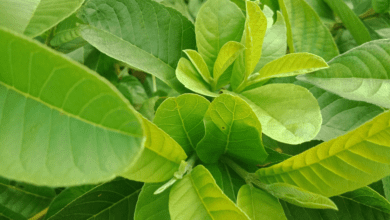
I’ve spent the last two years studying mobile development and the past four years working in the charity sector. How can the two worlds collide? If we create apps that have some positive impact on society and/or the environment and gain a user base as big as those for say, Tinder or Uber, imagine the collective impact we could have…
This week, on my commute to work, I’ve been learning about the global issue of food waste and exploring the Play Store for apps that make it possible and easy for the average smartphone owner to become part of the solution. Here’s what I’ve found:
The Problem of Food Waste
There are about 800 million starving people in the world. We produce more than enough food to feed everybody, but sadly one-third of all produce is lost or wasted. The biggest culprits for this are unsurprisingly (and uncomfortably for myself, as a Brit) the Western world. Food is lost at all stages of the cycle – production, retail, and consumer. This isn’t a new problem, and there are various initiatives and organizations working to seal the leaks (Fareshare, FoodCycle, OzHarvest).
We produce more than enough food to feed everybody, but sadly one third of all produce is lost or wasted.

It is well known that supermarkets discard blemished fruit and vegetables, even though they are still edible, assumably in the fear that customers will perceive their products as low quality. If we can eat broken biscuits, surely we can eat dented fruit? I really was pleased this morning to stumble across this recent article – LIDL are doing its bit by selling 5kg boxes of imperfect fruit for just £1.50. Hopefully, other big chains will catch on soon too.
It is well known that supermarkets discard blemished fruit and vegetables, even though they are still edible.
When it comes to prepared food outlets like restaurants and cafes, I can imagine it’s quite hard to avoid having a few extra meals or sandwiches at the end of the day – consumer behavior is impossible to predict perfectly.
For many years, The Pret Foundation (aka Pret A Manger) has been sending a fleet of vans around to stores at the end of the day to collect unsold goods and deliver them to homeless shelters – last year they’re estimated to have distributed over 3 million food items to people in need! Well done, Pret.
Food Waste Apps that are Addressing the Problem:
I’ve picked out three of my favorite food waste apps on the Play Store to share.
1) TooGoodToGo (Play Store, App Store)
its mission is to reduce food waste by allowing nearby restaurants, bakeries, and supermarkets to advertise and sell food that they would otherwise waste. Users simply find a local store, order, and collect at a specified time. All food is sold at a bargain price between £2 – £4.
2) Karma (Play Store)
similar to TooGoodToGo, this app focuses on reducing waste at the retail level. Pick up half-price, unwanted food from local grocery stores, restaurants, and cafes between 2 pm-6 pm, and get notified when your favorite outlets have just advertised unwanted food.
3) Olio (Play Store)
a handy little app that allows you to offer and take unwanted household food (and non-food) items from people nearby, often for free. With a few clicks and a couple of messages, you can avoid the guilt of throwing away that extra pot of baby food or bag of ground coffee, and meet a new neighbor in the process!
Don’t ever play yourself. Put it this way, it took me twenty-five years to get these plants, twenty-five years of blood sweat, and tears, I’m just getting started. Surround yourself with angels, positive energy, beautiful people, beautiful souls, clean heart, angels. It’s on you how you want to live your life. Everyone has a choice. I pick my choice, squeaky clean. I’m up to something. They don’t want us to win. Mogul talk. Look at the sunset, life is amazing, life is beautiful, and life is what you make it.
What else can we do?

What else can we do on an individual level? Well, besides grabbing a box from LIDL and onboarding with initiatives and food waste apps like TooGoodToGo and Olio, there’s a lot we can do in our own homes.
My mum’s favorite phrase is “waste not, want not” and from thirty years of experience, I can tell you there is nothing wrong with eating (vegetarian) food that is ‘on the turn’. And what about that fruit tree in the garden? Feeling inspired, I took five minutes before leaving the house on Thursday to pop out to the big fig tree and fill up a large Tupperware with fresh, delicious figs to take to my friends and colleagues at work. They went down so well, I was asked to do the same the next day! I hope this article has inspired one or two people to become part of the solution too.
Food waste apps FAQs
How do you keep track of food in the fridge?

Keeping track of food in the fridge can be done through a few simple methods. One way is to label your food items with their names and dates of storage. This allows you to easily identify what needs to be consumed first. Another helpful tip is to store similar items together in designated areas or containers, such as grouping dairy products, fruits, and vegetables separately. Additionally, you can create a simple inventory list or use a digital app to track the contents of your fridge.
How do I organize my fridge to prevent food waste?

Organizing your fridge effectively can help prevent food waste. Here are some tips to consider:
- Regularly clean and declutter your fridge to maintain visibility and prevent forgotten items from spoiling.
- Store perishable items like meats and dairy products on lower shelves where the temperature is cooler.
- Use clear containers or storage bins to group similar items together. This makes it easier to locate and use them before they spoil.
- Place older food items in front and newer ones at the back to ensure that older items are used first.
- Keep a designated “eat me first” section where you store items that need to be consumed soon.
Is there an app to keep track of leftovers?
Yes, there are several apps available that can help you keep track of leftovers. These apps allow you to input the type of food, date of storage and even set reminders for when it should be consumed. Some popular examples include “Fridge Pal,” “Fresh Box,” and “EatByDate.” These apps not only help you manage your leftovers efficiently but also minimize food waste by ensuring timely consumption.
How do I organize my leftovers in the fridge?
Properly organizing leftovers in the fridge can help you locate and use them before they go bad. Here’s how you can do it:
- Use clear and airtight containers to store leftovers. Clear containers make it easier to identify the contents without having to open them.
- Label each container with the name of the food and the date it was stored. This helps you keep track of how long the leftovers have been in the fridge.
- Place the containers in a designated area, such as a specific shelf or drawer, to keep them separate from other items.
- Stack containers neatly, with the oldest leftovers in front and the newer ones in the back. This ensures that you use the older leftovers first and prevents them from getting forgotten.
- Consider grouping similar types of leftovers together. For example, keep all vegetable-based leftovers in one section and meat-based leftovers in another. This helps with easy identification and prevents cross-contamination.
Remember, it’s important to regularly check your fridge for any expired or spoiled leftovers and discard them promptly to maintain food safety.




